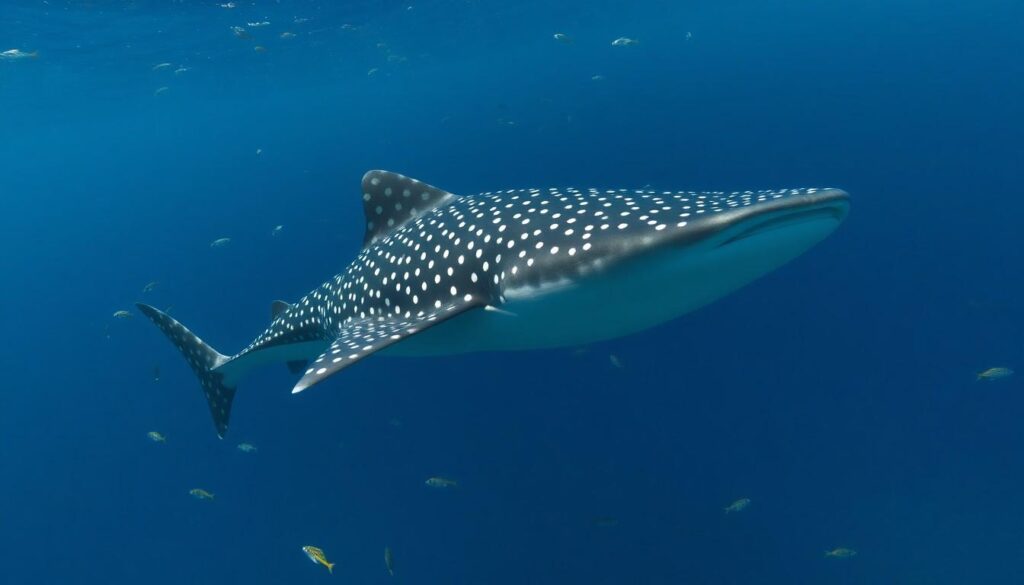Whale sharks are the gentle giants of the ocean, captivating everyone who encounters them. You might be wondering just how long these magnificent creatures can grow. On average, whale sharks reach lengths of 40 feet, but some individuals have been recorded at over 60 feet! Their impressive size makes them the largest fish in the sea, showcasing a blend of beauty and power.
Understanding the size of whale sharks not only highlights their uniqueness but also emphasizes the importance of their conservation. As you dive deeper into this topic, you’ll discover fascinating facts about their growth patterns, habitats, and the threats they face. Get ready to explore the incredible world of whale sharks and learn more about these awe-inspiring marine beings.
Overview of Whale Sharks
Whale sharks, scientifically known as Rhincodon typus, represent the largest fish species in the ocean. Their size and beauty captivate marine enthusiasts and researchers alike. Most whale sharks average between 30 to 40 feet in length, yet some individuals can grow to impressive lengths exceeding 60 feet, with the largest recorded specimen reaching about 61.7 feet.
Length Growth Patterns
You may find the growth patterns of whale sharks fascinating, as they differ from many other fish species. They experience rapid growth during their early years. Here’s a table showing average length at various ages:
| Age (Years) | Average Length (Feet) |
|---|---|
| 1 | 15 |
| 5 | 25 |
| 10 | 35 |
| 20 | 40+ |
These figures reveal that juvenile whale sharks grow at a remarkable rate, reflecting their adaptation to their environment.
Habitat Preferences
Whale sharks inhabit warm, tropical waters, often found in areas with abundant plankton, which constitutes their primary diet. They prefer coastal regions where food sources are plentiful. Popular habitats include:
- Caribbean Sea
- Indian Ocean
- Western Pacific Ocean
Their presence in these areas varies seasonally due to food availability and mating behavior.
Conservation Status
Due to their size, behavior, and ecological role, whale sharks face several threats, which impact their populations. These threats include:
- Overfishing
- Ship strikes
- Marine pollution
Conservation efforts focus on habitat protection and regulation of fishing practices to ensure the survival of this gentle giant.
Whale sharks not only impress with their size but also emphasize the need for concerted conservation actions. By understanding their growth, habitat preferences, and threats, you gain insight into the importance of protecting these magnificent creatures.
Size Characteristics
Whale sharks exhibit remarkable size variations influenced by several factors. Understanding these characteristics provides insight into their biology and conservation needs.
Average Length of Adult Whale Sharks
Adult whale sharks typically measure between 30 to 40 feet in length, although some exceptional cases reach lengths exceeding 60 feet. The following table summarizes their average lengths at various life stages:
| Life Stage | Average Length (feet) |
|---|---|
| Juvenile (0-5 years) | 10-20 |
| Sub-adult (6-15 years) | 20-30 |
| Adult (16+ years) | 30-40 |
| Exceptional Individuals | 60+ |
Factors Affecting Size
Several factors influence the size of whale sharks, including diet, environmental conditions, and genetics. Key factors include:
- Diet: Access to abundant plankton can lead to accelerated growth rates.
- Habitat: Warm, tropical waters typically support larger populations, enhancing growth opportunities.
- Genetics: Genetic variations may lead to size discrepancies among populations.
These factors contribute to the diversity in size seen within whale shark populations, affecting their overall health and survival.
Comparisons with Other Sharks
Whale sharks stand out as the largest fish in the ocean, but how do they measure up against other large shark species? This section explores comparisons with notable shark species and discusses length variations within species.
Whale Shark vs. Other Large Shark Species
| Shark Species | Average Length (feet) | Maximum Recorded Length (feet) |
|---|---|---|
| Whale Shark | 30-40 | Over 60 |
| Great White Shark | 11-16 | Up to 20 |
| Tiger Shark | 10-14 | Up to 16 |
| Hammerhead Shark | 10-14 | Up to 20 |
Whale sharks significantly exceed the average lengths of other large shark species. Great white sharks and tiger sharks commonly measure between 11 and 16 feet. In contrast, whale sharks can grow two to three times larger than these species, showcasing their unique stature in marine ecosystems.
Length Variations within Species
| Species | Average Length Range (feet) | Growth Rate |
|---|---|---|
| Whale Shark | 30-40 | Fast during juveniles |
| Great White Shark | 11-16 | Moderate |
| Tiger Shark | 10-14 | Moderate |
Length variations among shark species reflect distinct growth patterns. Whale sharks exhibit rapid growth, reaching an average of 40 feet by age 20. Other species like the great white and tiger sharks experience slower growth rates and smaller sizes, emphasizing the remarkable size variability in shark populations.
Importance of Size in Ecosystem
Whale sharks play a vital role in marine ecosystems, with their size significantly influencing various ecological functions. Understanding their dimensions aids in assessing their impact on the environment and conservation strategies.
Role of Size in Feeding Habits
Whale sharks are filter feeders, consuming vast amounts of plankton and small fish. Size determines their feeding efficiency, with larger individuals filtering more water per gulp. A breakdown of their feeding size advantages follows:
| Size Class | Average Length | Plankton Consumption Rate |
|---|---|---|
| Juveniles | 10-20 feet | Low |
| Sub-adults | 20-30 feet | Moderate |
| Adults | 30-40 feet | High |
| Exceptional | 60+ feet | Very High |
Larger specimens access deeper water layers, enhancing food availability. This behavior promotes the circulation of nutrients and maintains ecological balance within their habitats.
Impact of Size on Conservation Efforts
The size of whale sharks directly influences conservation priorities. Conservationists focus on larger individuals, which are often more affected by threats like ship strikes and fishing. Understanding size-related vulnerabilities aids in targeted efforts. Below is a summary of key conservation challenges based on size:
| Size Class | Challenges | Conservation Focus |
|---|---|---|
| Juveniles | Bycatch in fisheries | Protection of nursery habitats |
| Sub-adults | Habitat loss | Sustainable fishing practices |
| Adults | Ship strikes, pollution | Maritime traffic management |
| Exceptional | Rare and vulnerable | Community awareness and protection laws |
The significant size of whale sharks means they require expansive habitats, so protecting these regions becomes crucial for their survival.
Conclusion
Whale sharks are truly remarkable creatures that capture our fascination with their immense size and gentle nature. Understanding their growth patterns and habitat needs is crucial for their conservation. As you learn more about these magnificent fish, it becomes clear that protecting their environment is vital for their survival.
By supporting sustainable fishing practices and advocating for habitat protection, you can contribute to the preservation of these gentle giants. Every effort counts in ensuring that future generations can appreciate the beauty and ecological importance of whale sharks in our oceans.
Frequently Asked Questions
What are whale sharks?
Whale sharks, scientifically known as Rhincodon typus, are the largest fish in the ocean. They typically range from 30 to 40 feet in length, with some individuals exceeding 60 feet. Known for their gentle nature, they primarily feed on plankton.
Where do whale sharks live?
Whale sharks inhabit warm, tropical waters rich in plankton. Popular locations include the Caribbean Sea, Indian Ocean, and Western Pacific Ocean, where they can find abundant food sources.
Why are whale sharks important to marine ecosystems?
Whale sharks play a vital role as filter feeders, helping to maintain nutrient circulation in the ocean. Their size enables them to access deeper food sources, which contributes to overall ecological balance.
What are the main threats to whale sharks?
The primary threats to whale sharks include overfishing, ship strikes, and marine pollution. These threats highlight the urgent need for conservation efforts focused on habitat protection and sustainable fishing practices.
How do whale sharks grow over time?
Juvenile whale sharks experience rapid growth, reaching average lengths of about 40 feet by age 20. Their growth can vary significantly due to diet, environmental conditions, and genetics.
How do whale sharks compare to other large shark species?
Whale sharks significantly exceed other large shark species in size. For example, great white and tiger sharks typically measure between 11 and 16 feet. This emphasizes the unique growth patterns and ecological roles of whale sharks.
What conservation efforts are needed for whale sharks?
Conservation efforts should focus on protecting whale shark habitats, promoting sustainable fishing practices, and raising community awareness about their vulnerabilities to ensure their survival in the marine ecosystem.


